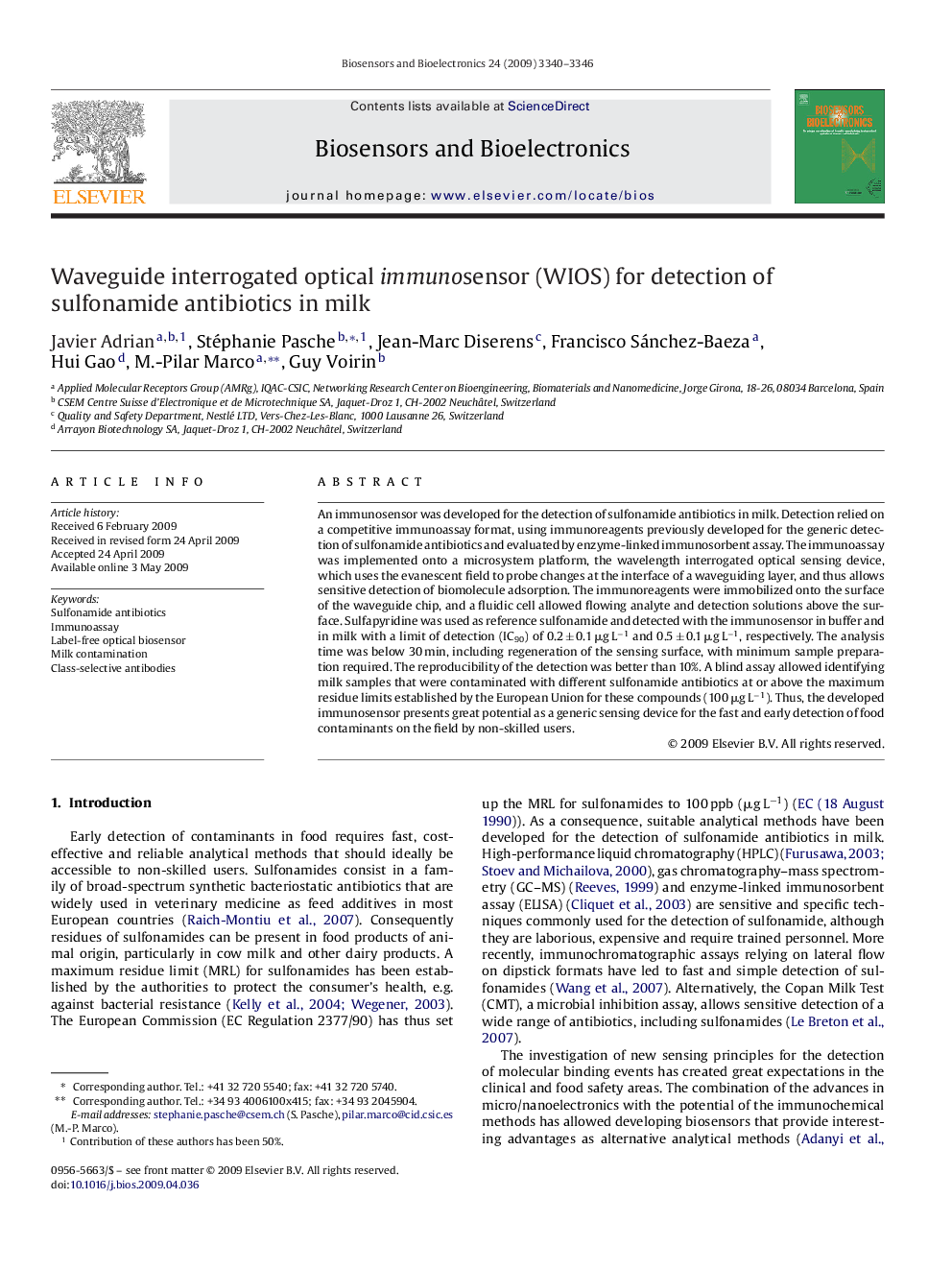| Article ID | Journal | Published Year | Pages | File Type |
|---|---|---|---|---|
| 868658 | Biosensors and Bioelectronics | 2009 | 7 Pages |
An immunosensor was developed for the detection of sulfonamide antibiotics in milk. Detection relied on a competitive immunoassay format, using immunoreagents previously developed for the generic detection of sulfonamide antibiotics and evaluated by enzyme-linked immunosorbent assay. The immunoassay was implemented onto a microsystem platform, the wavelength interrogated optical sensing device, which uses the evanescent field to probe changes at the interface of a waveguiding layer, and thus allows sensitive detection of biomolecule adsorption. The immunoreagents were immobilized onto the surface of the waveguide chip, and a fluidic cell allowed flowing analyte and detection solutions above the surface. Sulfapyridine was used as reference sulfonamide and detected with the immunosensor in buffer and in milk with a limit of detection (IC90) of 0.2 ± 0.1 μg L−1 and 0.5 ± 0.1 μg L−1, respectively. The analysis time was below 30 min, including regeneration of the sensing surface, with minimum sample preparation required. The reproducibility of the detection was better than 10%. A blind assay allowed identifying milk samples that were contaminated with different sulfonamide antibiotics at or above the maximum residue limits established by the European Union for these compounds (100 μg L−1). Thus, the developed immunosensor presents great potential as a generic sensing device for the fast and early detection of food contaminants on the field by non-skilled users.
